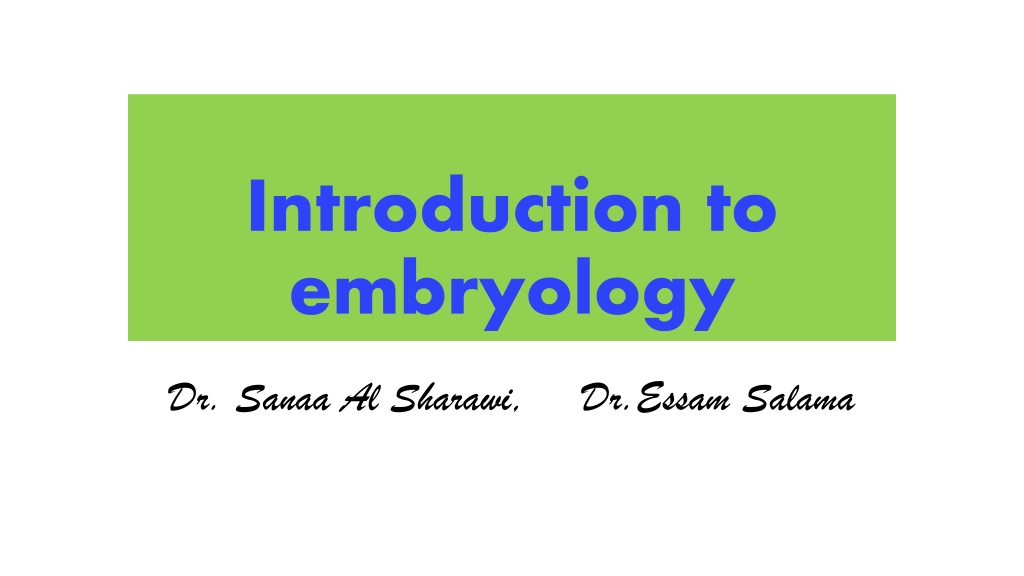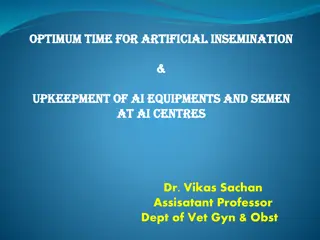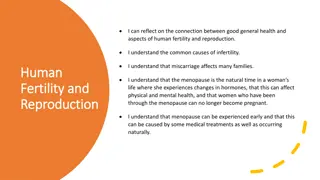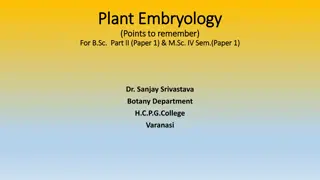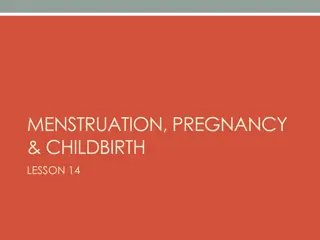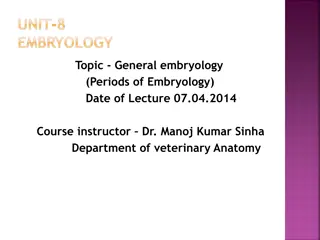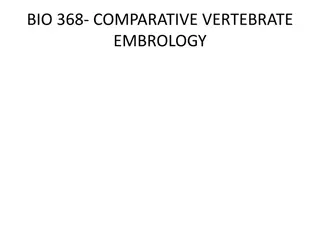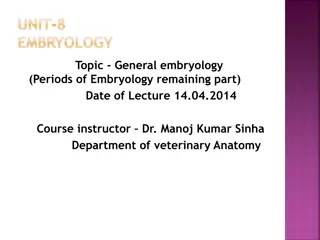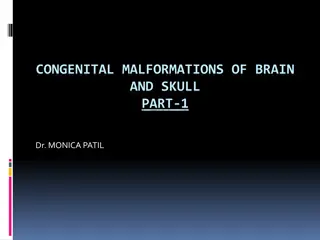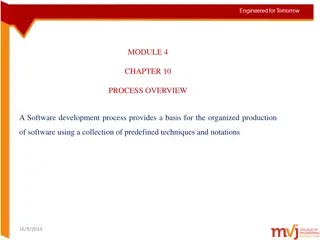Understanding Embryology: From Conception to Critical Periods
Embark on a journey through the fascinating world of embryology with Dr. Sanaa Al Sharawi and Dr. Essam Salama. Delve into the definition, significance, and developmental periods of embryology, learning about prenatal and postnatal stages, common terminologies like oocyte and zygote, and critical periods of human development. Explore how embryology helps us grasp the complexities of normal body structure, congenital anomalies, and genetic/environmental factors affecting development.
Download Presentation

Please find below an Image/Link to download the presentation.
The content on the website is provided AS IS for your information and personal use only. It may not be sold, licensed, or shared on other websites without obtaining consent from the author. Download presentation by click this link. If you encounter any issues during the download, it is possible that the publisher has removed the file from their server.
E N D
Presentation Transcript
Introduction to embryology Dr. Sanaa Al Sharawi, Dr.Essam Salama
Objectives After this lecture you should be able to : Define Embryology. Define the developmental periods. Define the significance of embryology. Knew the different embryological terminology. Define the nomenclature used to describe body parts, positions, and relationships. Describe in brief the important events in embryology.
Definition of Embryology Definition of Embryology This term generally referes to prenatal development of embryos and fetuses. Human embryology is the science concerned with the origin and development of a human being starting from a zygote to the birth of an infant. Development does not stop at birth. Important changes, in addition to growth occur after birth (postnatal changes) e.g.,development of teeth and female breasts. 3
SIGNIFICANCE OF EMBRYOLOGY SIGNIFICANCE OF EMBRYOLOGY Importance of Embryology : The study of prenatal stages of development, especially those occurring during the embryonic period is to understand the normal body structure and the causes of any congenital anomalies happen. So,It is concerned with various genetic and /or environmental factors that disturb the normal development producing birth defects. 4
Developmental periods : Developmental periods : Developmental periods are divided into : 1- Prenatal development : It is the main developmental changes occurring before birth, including : The embryonic period : starts from the fertilization to the end of 8th week. The fetal period : begins from the 9th week untill birth. 2- postnatal development : The changes occurring after birth, like teeth and breast. Prenatal development is more rapid than postnatal development and results in more striking changes.
Critical Periods of Human Development Critical Periods of Human Development This is the stage of development of an embryo that is susceptible to an agent, such as a drug or virus, which can lead to congenital abnormalities. Embryological Development is most easily disrupted when the tissues and organs are forming during the embryonic period. 6
Common terminology : Common terminology : Oocyte; the immature ovum or female germ cell. Ovum; the mature female germ cell. Sperm; the mature male germ cell. Zygote; the fertilized ovum. Cell division : there are two types of cell division: A- Mitotic : It occurs in the somatic cell, it produces 2 cells each contains 44 autosomes and 2 sex chromosomes (Diploid number of chromosomes). B- Meiotic (reduction) : It occurs in the primitive germ cells in the testes or the ovaries, it includes 2 stages 1st & 2nd meiotic divisions, it produces 2 cells then 4 cells ; each contains 22 autosomes and one sex chromosomes (Haploid number of chromosomes).
Descriptive Terms of the embryo : Descriptive Terms of the embryo : Related to the Directions: Cranial; the top of the embryo or the head. Cephalic; superior or the head. Caudal; inferior or the tail end. Dorsal; back of the embryo. Ventral; anterior or the belly side. Medial; near to the midline. Lateral; flank side.
Descriptive Terms: Descriptive Terms: Related to the Plans or sections: Longitudinal; median or sagittal. Coronal; frontal. Transverse; horizontal
Plans or sections: Transverse; horizontal coronal section through embryo Longitudinal Section Coronal Section
Major events during embryonic period Major events during embryonic period Gametogenesis. Fertilization. Implantation. Development of the Central Nervous System : begins at 3rd week. Development of Heart : begins at 3rd week. Embryonic Folding : 4th week 11
GAMETOGENESIS GAMETOGENESIS It is the production of mature gametes (sperm and ova) in the gonads (testes in males and ovaries in females). It is divided into: 1- Spermatogenesis. 2- Oogenesis. 12
SPERMATOGENESIS SPERMATOGENESIS It is the process of formation of mature sperms. Occurs in the semenifrous tubules of testis. Starts from puberty till old ages. It ends by formation of mature sperms with haploid number of chromosomes. 13
Results of spermatogenesis; 1- Reduction of chromosomal number from the diploid to the haploid number. 2- Change the primitive germ cell (spermatogonia) to the motile sperm. 3- Increase the number of the sperms. 14
OOGENESIS OOGENESIS It is the process of formation of mature ovum, It occurs in the cortex of the ovary, starts; during fetal life, completed after puberty, and fertilization and continues till menopause. It ends by formation of mature ovum with haploid number of chromosomes. 15
FERTILIZATION FERTILIZATION Definition: It is the process during which a mature male gamete (sperm) unites with a mature female gamete (oocyte) to form a single cell (ZYGOTE). Site : It occurs in the uterine tube. Results of fertilization: The diploid number of chromosomes is restored. The sex of the embryo is determined. Initiates cleavage (cell division) of the zygote.
IMPLANTATION It is the process of embedding of the blastocyct in the endometrium of the uterus, It begins: one week after fertilization. It is completed : by the 12th day after fertilization. Normal site of implantation : In the upper part of the posterior surface of the body of uterus near the fundus. Abnormal site of implantation (ectopic pregnancy) : Most common type of ectopic pregnancies occurs in the uterine tube. 17
Ectopic Implantation (Pregnancy) The usual site of implantation is the posterior wall of the body of uterus (X). Tubal pregnancy is the most common type of ectopic pregnancy (A). Ovarian pregnancy is the least common type of ectopic pregnancy (H).
It is The differentiation of the cells into Two layers : (A) Epiblast High columnar cells adjacent to the amniotic cavity. (B) Hypoblast Small cuboidal cells adjacent to Yolk sac.
TRILAMINAR DISC Now the embryonic disc is formed of 3 layers : Embryonic Ectoderm Intraembryonic Mesoderm. Embryonic Endoderm. Cells in these layers will give rise to all tissues and organs of the embryo.
Reference Reference : : MOORE PERSAUD THE DEVELOPING HUMAN Clinically Oriented Embryology. 7th edition 21
Thank you 22
